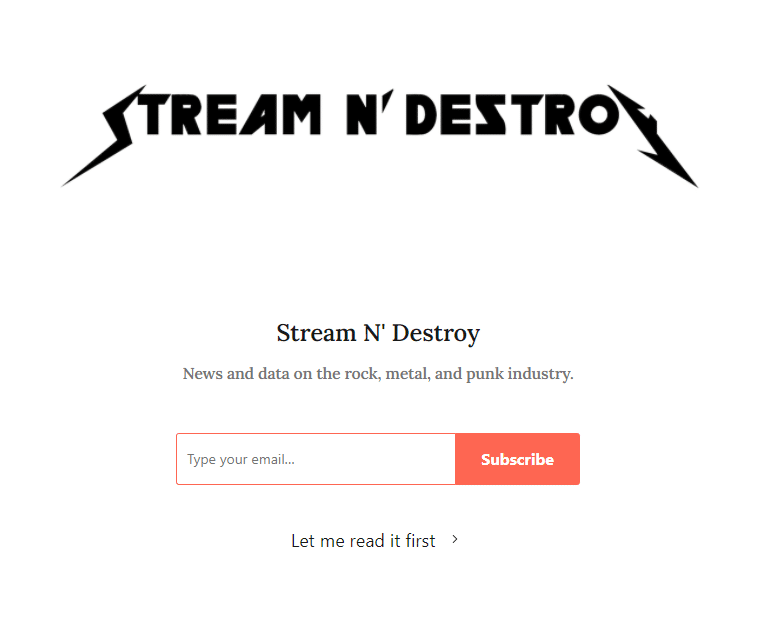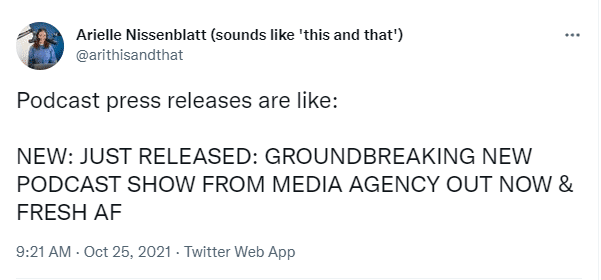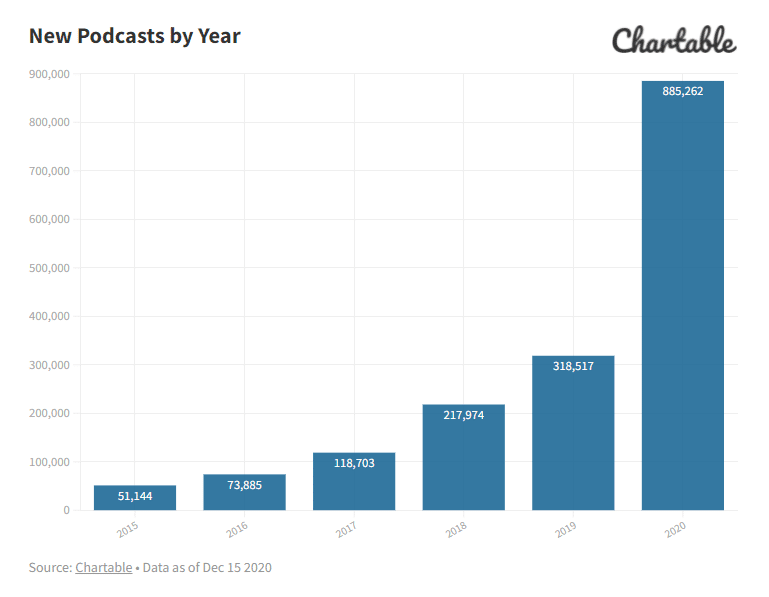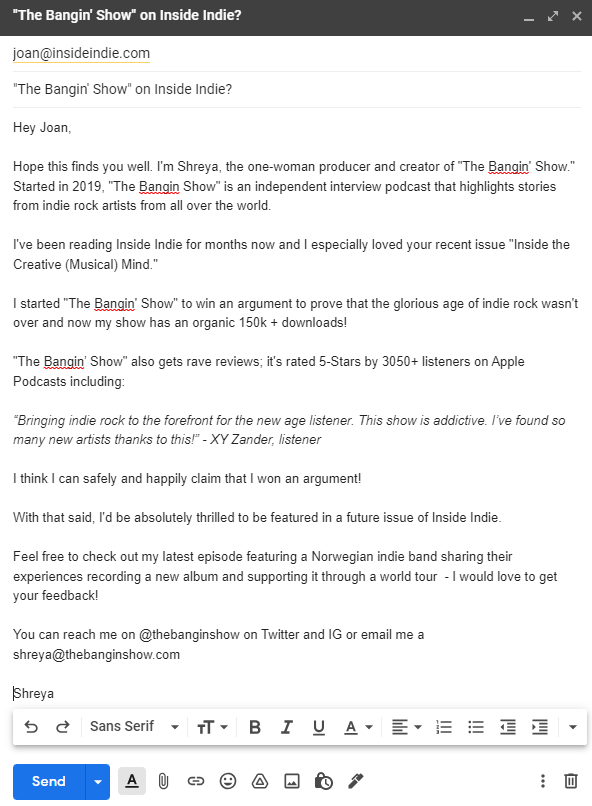[ad_1]
Podcasters want large audiences.
Audiences trust influencers.
Getting featured in a newsletter, as a guest on a popular podcast or in a reputable online publication are all effective ways to get your show in front of new followers and fans.
The chances of getting featured increase dramatically with a perfect pitch.
Below you’ll learn how to craft a compelling pitch targeted at influencers that are most likely to want to feature your show.
What to expect
Writing a good pitch is an art, a science and a craft. It takes research and practice.
To provide you with examples of how to sell your show, we’re going to create a fake podcast called “The Bangin’ Show.” It’s an interview podcast which features up and coming rock bands and artists talking about their music.
📣 The Elements Of Pitching
Before you pitch, you’ll need to identify and interact with your community. Your community can include influencers and potential fans of your show.
You need to know what they read and what they care about. You need to know where they hang out, and which influencers in the community are the real movers and shakers.
Here are a few things you should keep in mind as you get started:
- Keep an eye out for influential newsletters in your niche
- Cultivate an online presence through sharing and engaging
- Identify the most passionate creators
Newsletters: podcasting’s favorite discovery medium
One of the most effective ways to reach new fans and followers is getting featured in newsletters written by podcasting journalists.
Below are a few industry-favorite podcast recommendation newsletters. Note their preferred niches and specializations.
Study their tone of communication, and their general branding. Think about how you could match their vibe if you ever device to pitch to them.
- Earbuds Podcast Collective – founded by Arielle Nissenblatt, the Earbuds Podcast Collective is a weekly newsletter that picks a theme and 5 podcast episodes on that theme. Each newsletter is curated by a different person.
- POD.DRALAND – provides episode recommendations of other women-hosted podcasts, as well as updates & news on women in podcasting.
- Pod People – a monthly newsletter filled with podcast recommendations and animal GIFs.
- Podcast The Newsletter – a weekly love letter to podcasts and those who make them.
- Bello Collective – a women-led newsletter which sits at the intersection of writing, journalism, and recommendation in audio storytelling. They also curate podcast playlists, with emphasis on fiction shows.
While these are exclusively podcast recommendation newsletters, your show might also find a place in a newsletter that is focused on your niche.
For instance, our hypothetical podcast “The Bangin’ Show” would may be a good fit for Ryan J. Downey’s newsletter “Stream N’ Destroy.”

Good pitches stand out and get noticed
Podcast journalists receive multiple podcast pitches and press releases every day; unfortunately, most are poorly crafted and get ignored.

Instead of something boilerplate, lightly flavor your pitch with the lingo, memes and vibes of your community.
“The Bangin Show,” for example, might reach out to an emotronic artist to talk about the problem of snobcore, and slip in a joke about an impending illyass invasion. (Be careful not to overdo it so much that it comes off like Steve Buscemi’s fellow kids meme.)
Create a consistent and valuable presence online
As we mentioned previously, you’ll need to network, engage, like, comment share, and be part of the conversation happening in your niche.
Be a part of the community you want to get noticed in.
Interacting makes your name more likely to be recognized when you send them a pitch. More importantly, paying attention to their activities lets you open your pitches with something more personal and striking than a “Love your work.”
“Remember, your podcast does not exist in a vacuum. Chances are, there are many shows just like yours. Listen to their shows. Follow them, reach out to them to collaborate. There’s no need to compete if you’re collaborating.”
Arielle Nissenblatt
🧡 Podcasting is driven by passionate creators
Last year we saw a weekly average of 17,000 podcasts released. Earlier this year, Chartable shared that 23% of the podcasts launched in 2021 published more than 10 episodes—in other words, these podcasters are active and committed.

What this means for you is that there are many passionate podcasters to invite on to your show, or to get invited as a guest on their shows.
Behind the scenes, be sure to ask your fellow podcasters for advice or share advice if you have any to give.
We recommend checking out the “Finding a Podcast” subreddit that’s just brimming with awesome advice from experienced creators!
“Despite all the flashy news of deals and celebrities, there’s still a community spirit and a desire to help each other succeed. Be yourself and reach out to others in a way that feels natural. More often than not, you’ll be less than 6 degrees [of separation] from each other.”
Meggan Ellingboe
For example, as the producer of our hypothetical The Bangin’ Show, you might reach out to a journalist who investigated the challenges the old music presents to new music, and invite them onto a panel on the show to discuss that article with a handful of indie musicians who are struggling to compete with the past.
Step 1: Introduce Yourself, Your Podcast, & Establish Common Ground
✏️ Now it’s time to start working on your pitch.
Start by introducing yourself with your name, your podcast’s name, the date you launched, and what your show is about.
If you have been referred to their show by someone they know or have a mutual contact, mention that right away.
If not, the following pointers will help you make your leading paragraph more relatable:
- Google the newsletter and the author to see what they’re talking about currently
- Check if the newsletter published any annual playlists that your podcast could be on
- Identify any news items/current affairs that your show probably complement
Step 2: Explain Your Motivations for Starting the Podcast and Why You Should Be Featured
Hopefully you have their attention now, so keep it.
An elevator pitch is all about answering specific, important questions that will spark the interest of your target.
Your elevator pitch should include:
- What is your podcast about?
- Why did you create it?
- Who is your audience?
Next, validate your podcast by including:
- How many downloads have you had?
- Any stand-out testimonials?
- Have you been a guest on other popular podcasts in your niche?
- Include where your show has been featured or mentioned
Testimonials and download numbers are a great indicator of how popular your show is.
If you don’t have any reviews yet, it’d be a good idea to get some before pitching. Asking for testimonials on social media is one way to do it. We also recommend sending a survey (using this free Edison survey template) to your existing listeners.
We already included downloads so the testimonials for “The Bangin’ Show” might look something like this –
“The Bangin’ Show” also gets rave reviews; it’s rated 5-Stars by 250+ listeners on Apple Podcasts, with enthusiastic comments like —
“An intersection of rock music AND promoting the underdog musician? It doesn’t get better than this.” – C. Fernando, listener
“Bringing rock to the forefront for the new age listener. This show is addictive. I’ve found so many new artists thanks to this!” – XY Zander, listener
Step 3: Close with clarity of intent and purpose
The closing of a pitch is just as important as the opening.
Providing a clear call to action can go a long way, it tells the journalist exactly what you want from them, whether it’s a:
- A newsletter feature
- A social media shoutout
- Connecting with another journalist/podcast creator
- Being a guest on a podcast
💡 Pro Tip: Let them know where to reach you which can include your email address or social media handles – and keep checking for their responses!
Putting It All Together
Now that we’ve covered all the elements of an effective pitch, it’s time to bring everything together.
For example, say you want to pitch “The Bangin’ Show” to a newsletter that features the indie music scene called “Inside Indie.”
Then you might say:

🎁 Wrapping It Up
Taking the time to understand your target, engage with your community and carefully craft your pitch will significantly increase your chances of getting featured.
Good luck, and happy pitching!
[ad_2]
Source link